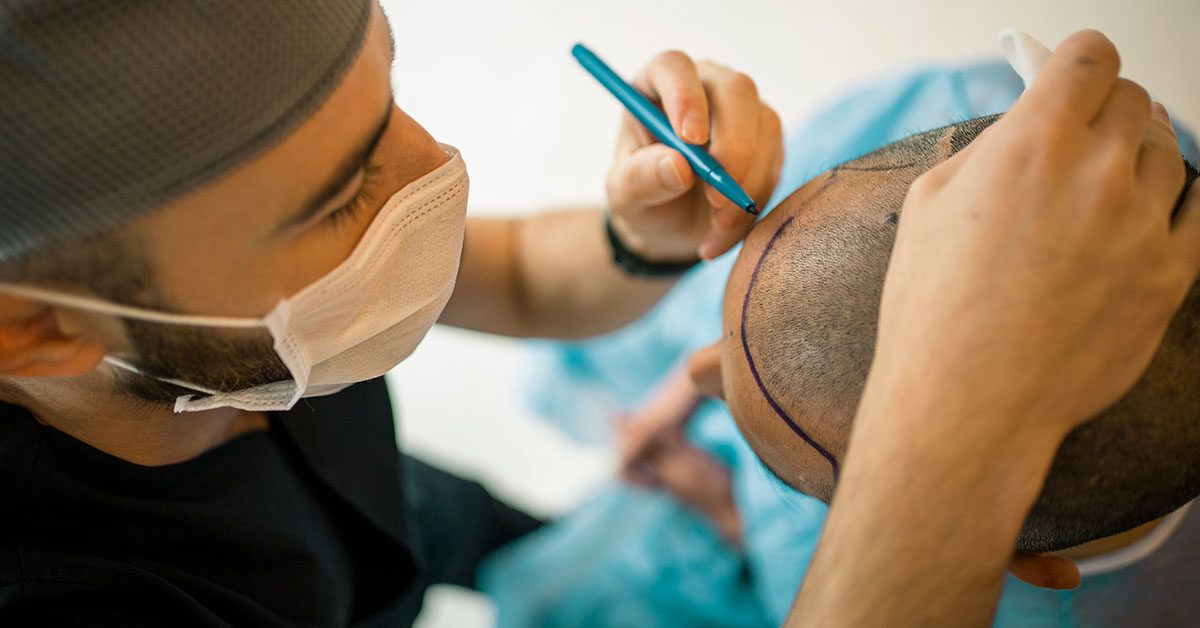Hair transplants have become a popular solution for those experiencing hair loss, offering a permanent and natural-looking way to restore hair. Dubai is a hub for advanced cosmetic procedures, and many people choose this city for their hair restoration journey due to its world-class facilities and expert surgeons. If you're considering a Hair Transplant in Dubai here's what you can expect before, during, and after the procedure.
Before the Hair Transplant
1. Research and Consultation:
Before undergoing a hair transplant in Dubai, it's crucial to conduct thorough research to find a reputable clinic and experienced surgeon. Dubai is home to many high-quality clinics, so take the time to read reviews, compare services, and consult with different specialists to find the right fit for you.
2. Initial Consultation:
Once you've chosen a clinic, the first step is an initial consultation with your surgeon. During this meeting, the surgeon will evaluate your hair loss, discuss your goals, and determine the most suitable hair transplant technique for your situation. This could be Follicular Unit Extraction (FUE), Follicular Unit Transplantation (FUT), or another advanced method.
3. Pre-Procedure Preparations:
Before the procedure, you'll receive specific instructions to prepare for your hair transplant. This might include avoiding certain medications, quitting smoking, and refraining from alcohol consumption. It's also recommended to wash your hair thoroughly on the day of the surgery and wear comfortable clothing.
4. Setting Realistic Expectations:
Your surgeon will also help you set realistic expectations for the procedure. While hair transplants can significantly improve your appearance, it's important to understand that results can vary depending on factors like the extent of hair loss, hair type, and overall health.
During the Hair Transplant
1. The Procedure Day:
On the day of your hair transplant, you'll arrive at the clinic, and the staff will prepare you for the procedure. This usually involves administering local anesthesia to numb the scalp, ensuring that you won't feel any pain during the transplant.
2. The Transplant Process:
The hair transplant process involves extracting hair follicles from a donor area (typically the back or sides of the head) and implanting them into the balding or thinning areas. The technique used will depend on your specific case:
- FUE: Individual hair follicles are extracted and implanted one by one. This method is minimally invasive and leaves tiny, almost invisible scars.
- FUT: A strip of scalp is removed from the donor area, and hair follicles are extracted from this strip before being implanted. FUT may result in a linear scar but allows for the transplantation of a larger number of follicles in one session.
3. Time and Comfort:
The duration of the procedure can vary depending on the number of grafts required, but it typically takes between 4 to 8 hours. You can expect to be awake during the procedure, often with the option to watch TV, listen to music, or even take a nap.
4. Post-Procedure Care:
After the transplant, the surgeon will provide detailed post-procedure care instructions. This includes how to care for the transplanted area, medications to manage pain and prevent infection, and guidelines for washing your hair. You may experience some mild discomfort, swelling, or redness in the treated areas, but these symptoms usually subside within a few days.
After the Hair Transplant
1. Immediate Recovery:
In the first few days following the procedure, it's important to avoid strenuous activities, direct sunlight, and touching the transplanted area. Your surgeon may recommend sleeping with your head elevated to reduce swelling.
2. Shedding Phase:
A few weeks after the transplant, you might notice that the transplanted hair begins to shed. This is a normal part of the process called "shock loss," and it should not be a cause for concern. New hair growth will start to appear within a few months.
3. Hair Growth Timeline:
Hair growth after a transplant is gradual. You can expect to see noticeable results within 3 to 6 months, with full results typically visible after 9 to 12 months. The new hair will grow naturally and can be cut, styled, and treated just like your existing hair.
4. Follow-Up Appointments:
Regular follow-up appointments with your surgeon are essential to monitor progress and address any concerns. Your surgeon may also recommend additional treatments, such as Platelet-Rich Plasma (PRP) therapy, to enhance hair growth and improve the overall outcome.
5. Long-Term Care:
Maintaining the results of your hair transplant involves good hair care practices, a healthy lifestyle, and possibly ongoing non-surgical treatments. Your surgeon will provide advice on how to keep your new hair looking its best for years to come.
Conclusion
A hair transplant in Dubai is a significant investment in your appearance and self-confidence. By understanding what to expect before, during, and after the procedure, you can approach your hair restoration journey with confidence. Dubai's advanced clinics and skilled surgeons ensure that you receive top-quality care throughout the process, helping you achieve natural-looking, long-lasting results. Whether you're dealing with thinning hair or significant hair loss, a hair transplant can be a life-changing solution, providing you with the hair you've always wanted.





Comments